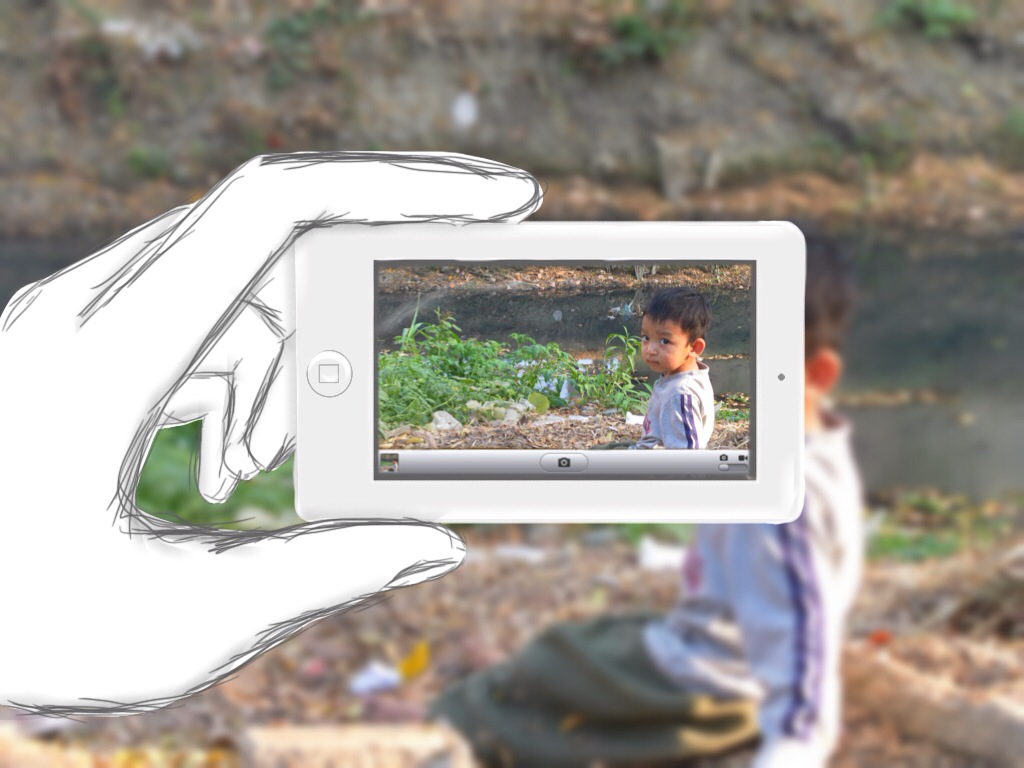The picture itself is one that I took in one of the slums of Thailand. This picture struck me so because I couldn't believe that I was actually the one behind the camera, looking through the lens at this impoverish toddler playing in the trash next to a river filled with raw sewage. I felt so guilty for taking this picture but it was one of those moments that I knew that I had to take it, not for me but to advocate for people like this little boy; that I could stand and testify with a picture, such as this, saying, "Look you can't explain it away. It's not a farce. It's not a million miles away. I've been here, I've held that boy. It's real!"
But the sad reality is that there are slums like this. Extreme poverty exists, and for whatever reason, is worsening. I think this picture demonstrates the extreme separation we have between our world and the impoverished world. But just as the drawing suggests, what's real is the picture - the reality of extreme poverty. The world that we have drawn for ourselves and the comfort that we allow to separate us from the needs of the world are temporary and mortal; a facade we have bought into that will fade in the end.
Global poverty facts: (http://onedayswages.org/about/what-extreme-global-poverty)
- $1 challenge. More than 1 billion people live on less than $1 a day and more than 2 billion live on less than $2 a day.
- Check your assumptions. Americans believe that their government spends 24 percent of the federal budget on aid to poor countries, but the actual figure is less than 1 percent.
- Daily disasters. HIV/AIDS, tuberculosis, and malaria—all treatable diseases—claim the lives of over 8,000 people every day in Africa due to lack of access to health care.
- The water walk. Women in developing countries travel an average of almost four miles each day to collect water.
- The poor pay more. People living in the poorest slums can pay as much as ten times more for water than those in high-income areas of their own cities.
- Gender disparity. According to the U.N., the majority of people in poverty are women, who globally earn roughly half as much as men.
- Daily bread. Food prices have risen 83 percent since 2005, disproportionately affecting those in poverty who spend a higher percentage of their income on food.
- No school for you. In 2005, a conservative estimate stated that 72 million children around the world of elementary school age were not enrolled in school.
- The global wealth gap. The richest 20 percent of the world's population receives 75 percent of the world's income, while the poorest 40 percent receive only 5 percent of the world's income.

No comments:
Post a Comment